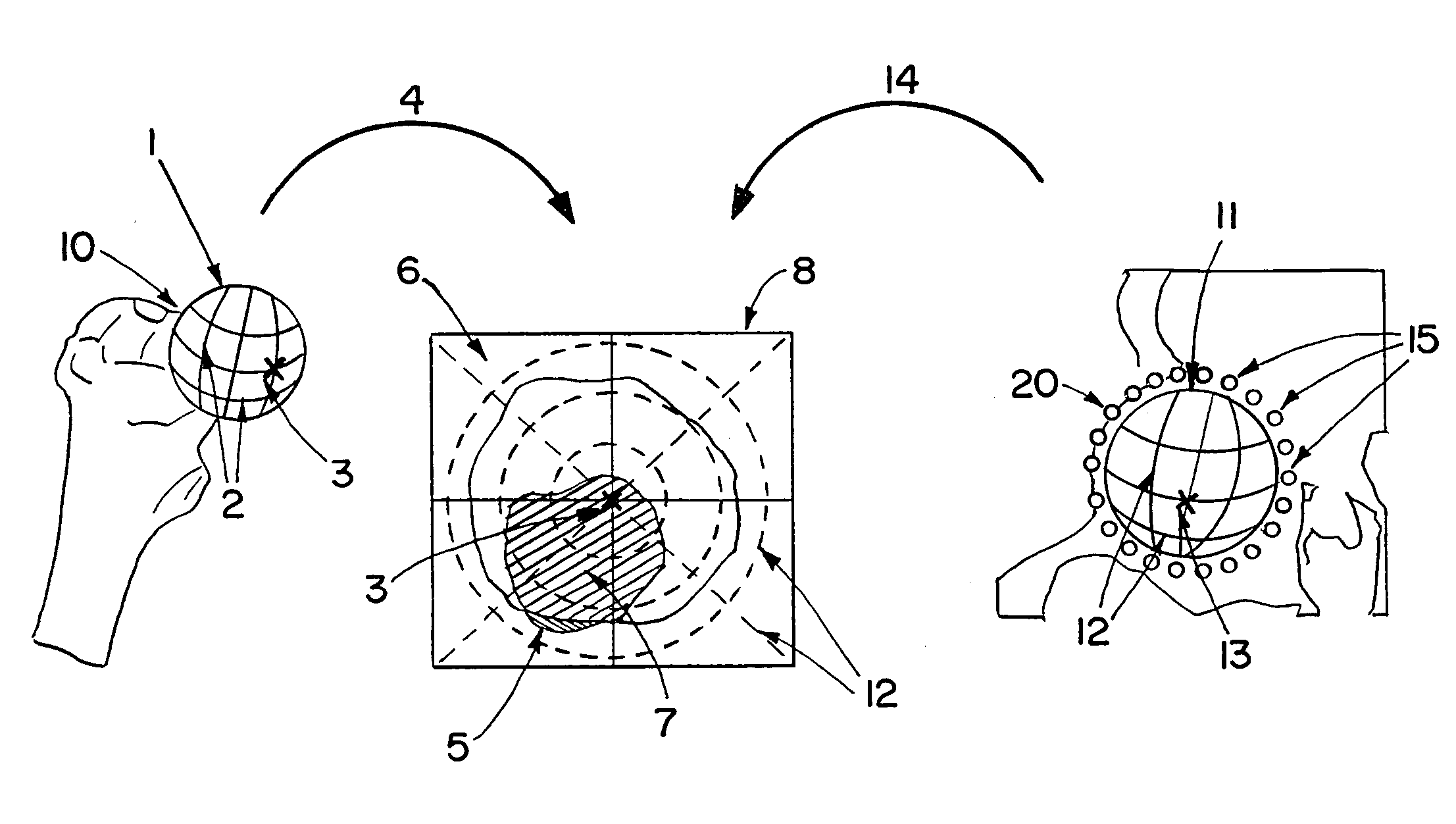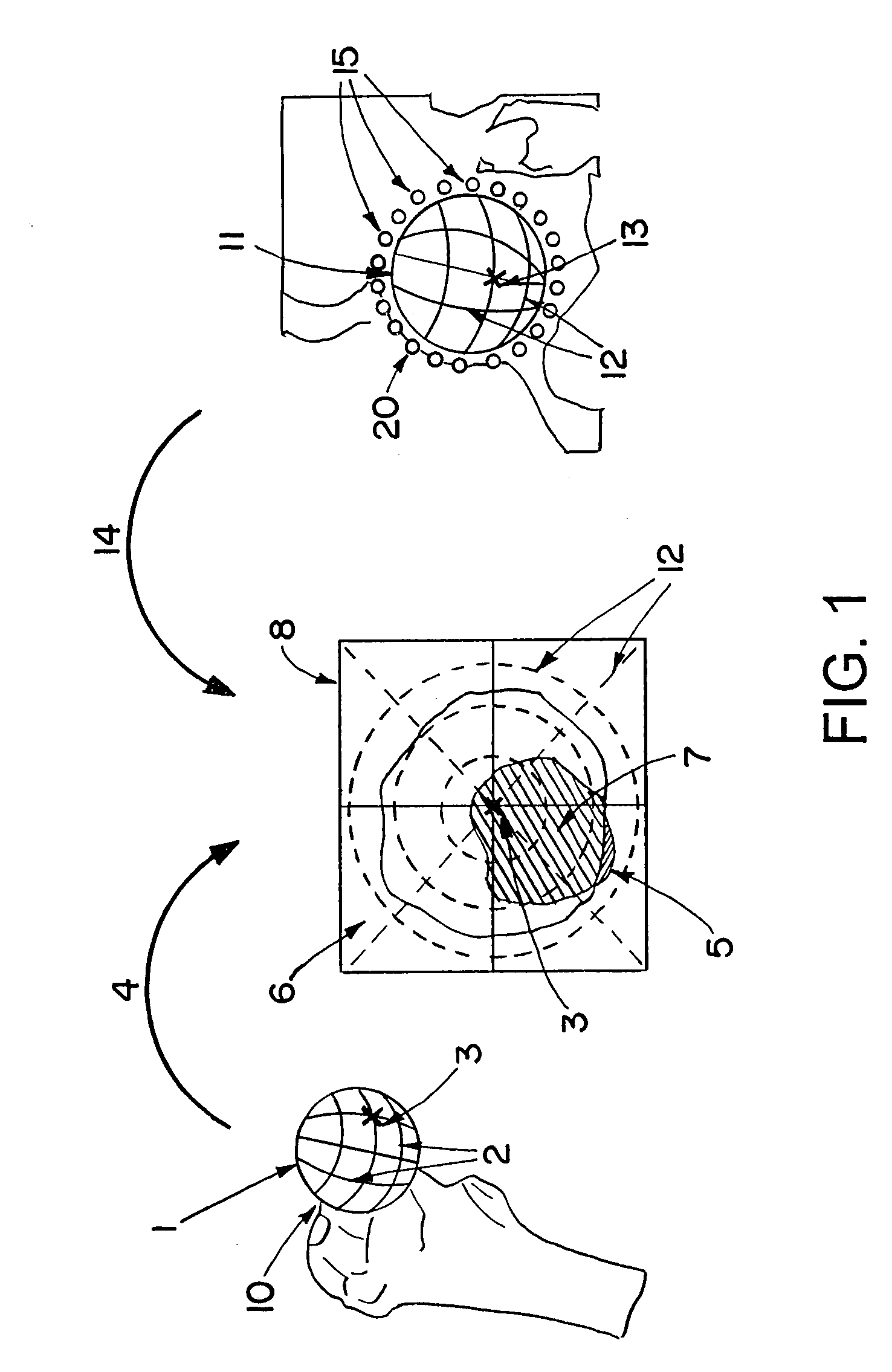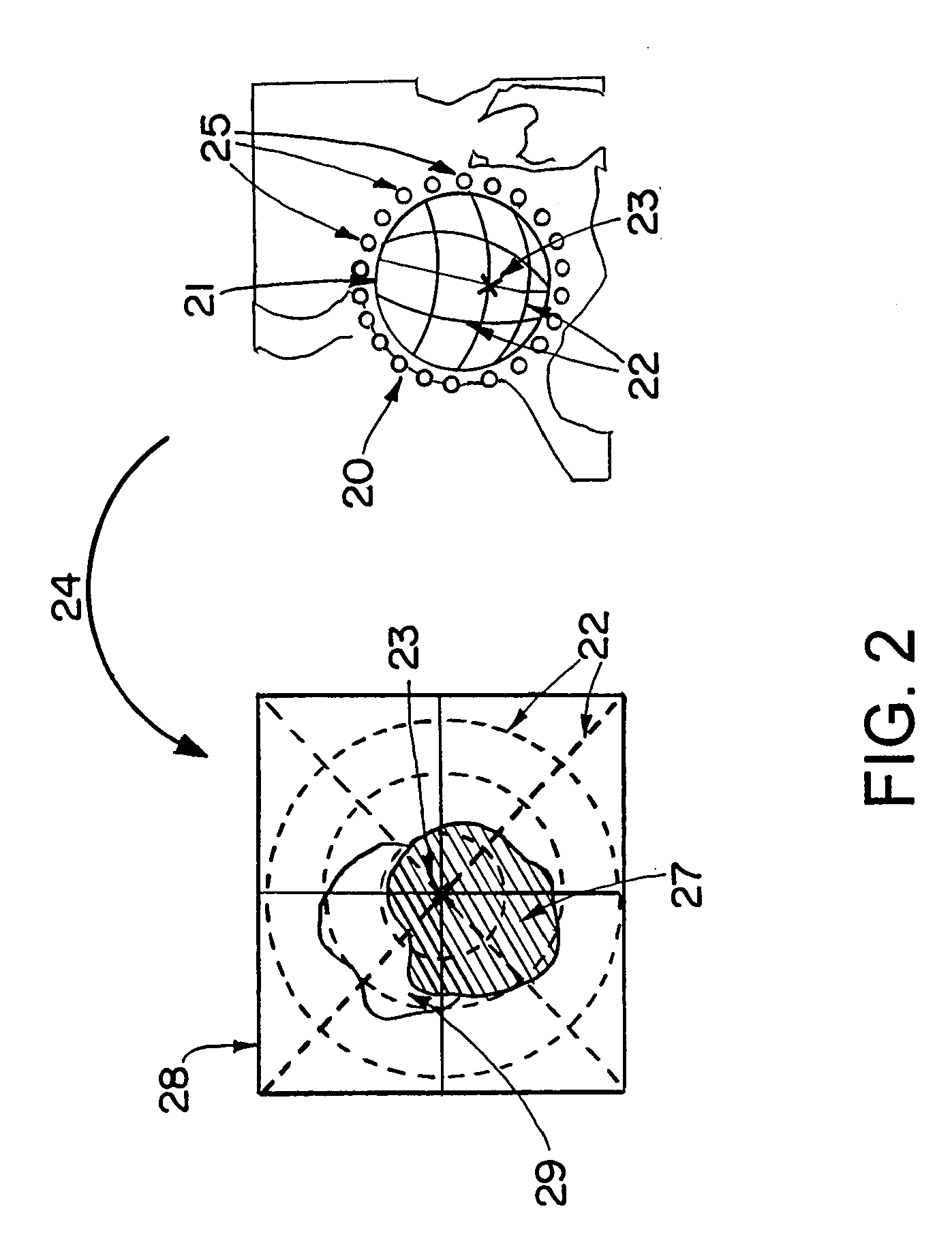Computer-assisted joint analysis using surface projection
a surface projection and computer-assisted technology, applied in image data processing, diagnostics, sensors, etc., can solve the problems of computational complexity, difficult visualization, easy comprehensibility, etc., and achieve the effect of facilitating visualization of data
- Summary
- Abstract
- Description
- Claims
- Application Information
AI Technical Summary
Benefits of technology
Problems solved by technology
Method used
Image
Examples
Embodiment Construction
[0017]The objects (the joint elements) processed in accordance with the invention can form a three-dimensional image or are configured such that a three-dimensional image can be produced. The three-dimensional image can be, for example, a surface model, a voxel model, or the like. In medical applications, the three-dimensional image can be produced by segmenting the relevant objects in a CT, MR, or x-ray volume data set. Alternatively, such three-dimensional images can be provided from particular types of three-dimensional models, for example from CAD models for known implants (or from body atlases or other) wherein the models can be adapted to the actual size.
[0018]A mathematical model of the joint motion helps in calculating idealized motion surfaces that can be used to calculate critical regions. Idealized motion surfaces can be calculated for each individual object. The idealized motion surfaces also can be referred to herein as “border areas,” since they represent the border li...
PUM
 Login to View More
Login to View More Abstract
Description
Claims
Application Information
 Login to View More
Login to View More - R&D
- Intellectual Property
- Life Sciences
- Materials
- Tech Scout
- Unparalleled Data Quality
- Higher Quality Content
- 60% Fewer Hallucinations
Browse by: Latest US Patents, China's latest patents, Technical Efficacy Thesaurus, Application Domain, Technology Topic, Popular Technical Reports.
© 2025 PatSnap. All rights reserved.Legal|Privacy policy|Modern Slavery Act Transparency Statement|Sitemap|About US| Contact US: help@patsnap.com



